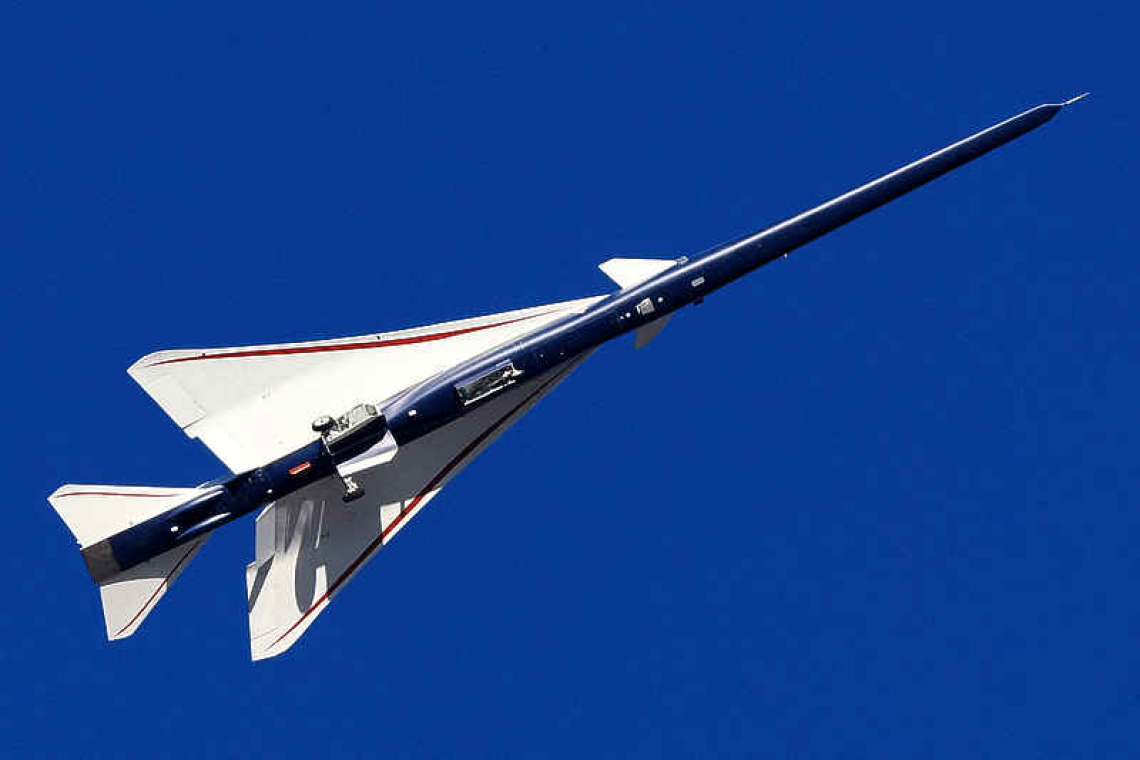PALMDALE, California--NASA's X-59 supersonic-but-quiet jet soared over the Southern California desert on Tuesday in the first test flight of an experimental aircraft designed to break the sound barrier with little noise, paving the way for faster commercial air travel.
The sleek aircraft, built for NASA by aerospace contractor Lockheed Martin, took off about an hour after sunrise from a runway at Plant 42 of the company's Skunk Works facility in Palmdale, about 60 miles (100 km) north of Los Angeles. After a steep climb over sod fields just east of the runway, the plane was seen banking to the north on a trajectory toward Edwards Air Force Base, where it landed safely about an hour later near NASA's Armstrong Flight Research Center. It was accompanied by a NASA chase plane. The plane's unique shape is designed to greatly reduce the explosive-like sonic boom normally produced when an aircraft breaks the sound barrier, lowering the volume to a muffled "sonic thump" no louder than slamming a car door. Perfection of such low-decibel flight technology is aimed at overcoming one of the primary obstacles to supersonic commercial flight, long restricted over populated areas on land due to noise concerns, according to Lockheed. Getting the plane off the drawing board and into the air was not inexpensive. NASA has paid Lockheed more than $518 million since 2018 to develop and demonstrate X-59, according to agency contracting data. The single-engine jet - measuring just under 100 feet (30 meters) from nose to tail - flew at subsonic speeds on its first flight, as expected, reaching 230 mph (370 kph), according to Lockheed Martin. Its peak altitude during the flight was 12,000 feet (3,660 meters). About 200 aerospace workers and their families watched the takeoff from a safe distance parked along a nearby highway. "X-59 successfully completed its first flight this morning," Lockheed Martin spokesperson Candis Roussel told Reuters in a brief emailed statement, hailing it as a "significant aviation milestone." NASA's lead X-59 test pilot Nils Larson was at the controls in the single-crew cockpit for the flight, Roussel said. The X-59, a one-of-a-kind experimental aircraft, is built to reach a cruising speed of 925 mph (1,490 kph), or Mach 1.4, at an altitude of 55,000 feet (16,764 meters), more than twice as high and nearly twice as fast as conventional airliners fly, the company said. Data derived from research with the X-59 will inform development of new sound thresholds for supersonic flight over land, the company said. The supersonic Concorde aircraft began scheduled transatlantic flights with British Airways and Air France in 1976. But the plane was retired in 2003 due to high operating costs, limited seating and sluggish passenger numbers following a fatal crash in July 2000 and the September 11 attacks in 2001.







